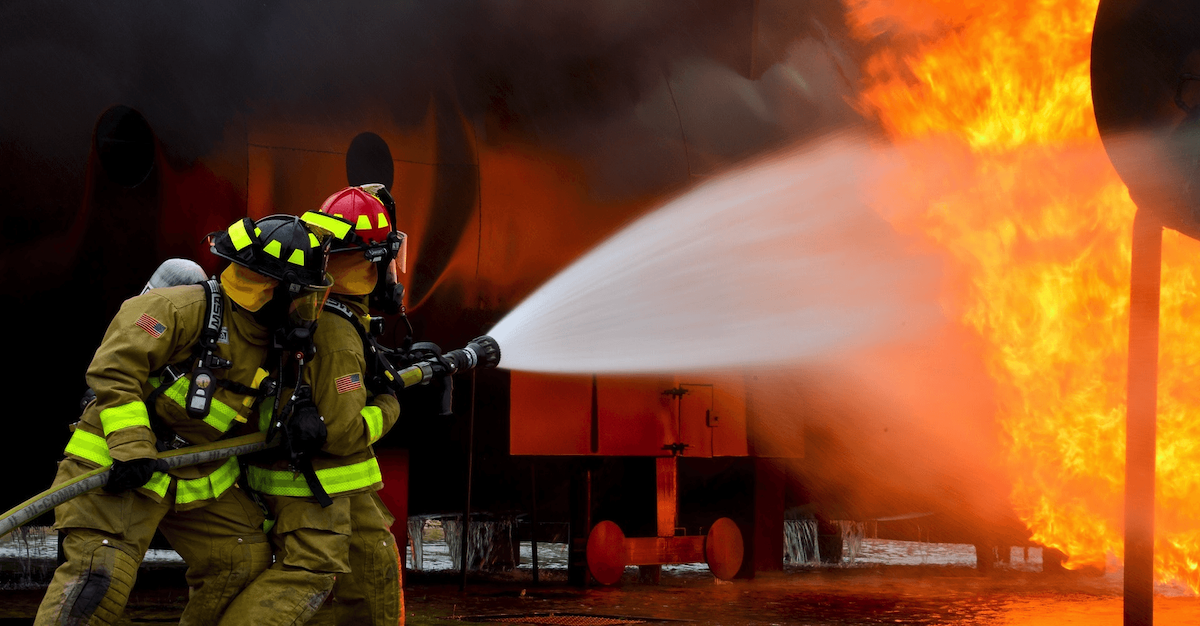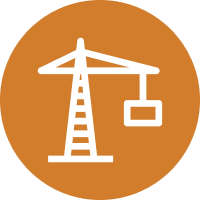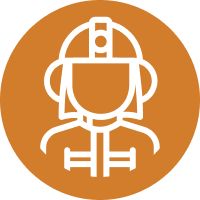
The inherent dangers of the petrochemical manufacturing environment require an intense focus on safety. Best-in-class facilities are in a constant quest to maintain continuous improvement programs to ensure their operations result in no harm to people or the environment. In order for this to be achieved, significant resources and attention must be allocated to:
- Process Safety: To reduce or eliminate safety incidents in the manufacturing process that can lead to accidents, explosions or releases that are harmful to people and/or the environment.
- People Safety: To reduce or eliminate harm to people from workplace injuries, workplace violence, severe weather events or accidents resulting from process safety incidents.
The latter can seem almost impossible. However, with a little help from technology, safety professionals can dramatically reduce the risk to people on site by making data-driven decisions. This opportunity has given rise to a new category of products that are dedicated to safety managers’ missions of continually improving emergency response capabilities. This technology is refining the pace and accuracy of emergency mustering exercises by 90% in downstream facilities. These improvements are achieved by providing rich, safety-specific data to emergency responders during the incident as well as a deep resource of data after the event so that they can identify areas for improvement.
A Tale of Two Disciplines
The industry does a good job of attracting and developing a talented pool of Emergency Response professionals who know how to improve their facilities. However, over the past several decades, investment in Process Safety has dramatically outpaced investment in People Safety in this sector. The business case is sound – Process Safety improvements reduce risk to the broader community and have the ancillary benefit of improving process efficiency through improved automated controls. To be clear, People Safety is equally important to the business mission, but the industry has only made incremental process improvements in this area in the same time period.
To illustrate this point, consider that more than half of all downstream facilities still use manual, paper-based systems to account for their staff in emergencies. That means they rely on a formalized game of “telephone” to determine if everyone is safe in a plant emergency. That’s right, facilities still count their employees in emergency situations using pen, paper and word of mouth. Can you imagine if half of the industry still used clipboards and analog systems to control their production processes?
That’s why technologies like AllClear are being developed by safety professionals for safety professionals. This means that emergency response leaders are empowered with the tools and data that are specific to their needs – not a pen, paper and word of mouth. Better, more accurate, real time decisions are driven by data, faster than ever before, which equates to lives saved.
Damocles’ Sword
Events over the last several years show the overhang of risk that has accrued from the lack of investment. Below is a mix of notable examples from our experiences in emergency situations. Some became news items and others nearly were.
- Badge System Inaccuracies: A chemical plant suffered a fatality, in part, because the badge system failed to deliver a timely report of people on site after an explosion. The victim was previously thought to be accounted for but was discovered hours later under rubble on the scene.
- Pen and Paper Inefficiencies: During a refinery fire, a supervisor was unable to use the paper sign-in sheet that contained the names of operators in the stricken unit because rain made the ink unreadable.
- Misinformed Media Relations: A chemical manufacturer was unable to give clear guidance to the media for several hours after an incident because of ambiguity in the headcount data on site.
- Lack of Real Time Communication: During a shift change, hundreds of people entered a facility unaware that there was an active sheltering incident underway because there was no sustained method of notification.
- Phone-Tree Inaccuracies: A refiner, using a phone-tree method of accounting for personnel, accounted for more people than were actually on site because personnel were unable to reach their assigned assembly point and reported to an alternate location.
The lucky sites are the ones that learn a lesson with a near miss. Others, as you just read, suffer more costly lessons; but in 2015, this does not have to happen anymore. Safety technology that is easy to install and use is readily available to save lives. So, you may find yourself asking what’s the delay in adoption of these solutions?
“Good Enough”
Resistance to investment in emergency mustering technology stems from the “good enough” phenomenon. Clearly, allowing manual or analog Process Safety technology to remain in place was not “good enough” because it threatened both the competitiveness and community viability of the plant. Moreover, Process Safety is a complex intersection of the production, maintenance and safety functions that greatly benefit from automation. In contrast, the comparatively smaller challenge of counting staff on site in an emergency has traditionally been deemed “good enough” because the job got done; people were counted in an orderly drill and the drill could be declared a success. So, when the time came to compete for scarce capital funding, Process Safety faired better in the budget process and investments in People Safety (i.e., emergency mustering systems) lagged.
When You Have a Hammer, Everything Looks Like a Nail
New technology calls for investment, and therein lies the rub. Historically, when budgets were tight (and they were almost always tight) humans got creative. In most cases, the temptation was to use the facility’s badge access control system, an existing tool on site, to help out. The most prevalent of these systems have the ability to set up devices in safe shelters so that staff can account for themselves by presenting their badge to these devices. This takes some of the variability out of the process but, in the end, it amounts to using a security system to perform a safety function. This results in a very rigid process that doesn’t react well to the changing circumstances of a real event. Safety users have to continually print reports that are instantly out of date the moment they are printed (see #1 above) and compare them to see how they are progressing. Having ERTs and EOC commanders dabbling in the security system also distracts the security team from their separate mission. Finally, these systems don’t give safety users the basic tool set they need.
The common mission of all petrochemical facilities, to maintain safe operations and protect their employees, places a heavy burden on their emergency response resources. When it comes to accounting for people in emergencies, plants can reduce risk by investing in the quality, timeliness, and usability of data in emergency assembly, both during and after an event for analysis. This puts the facility on a continuous improvement journey that empowers safety professionals to achieve their mission of returning all employees home safely at the end of each shift.






